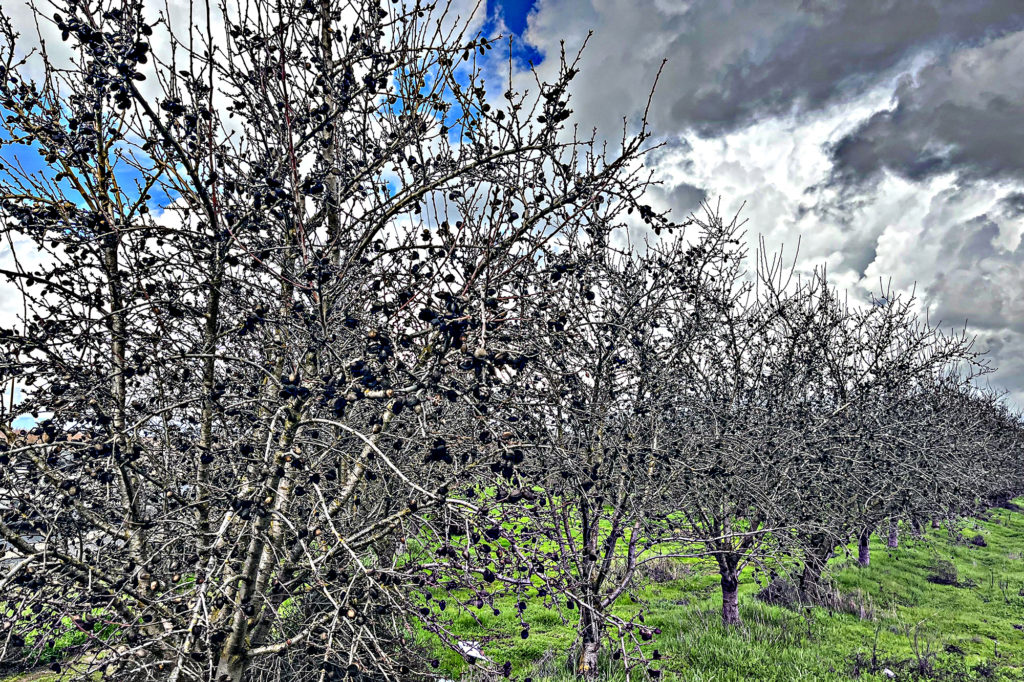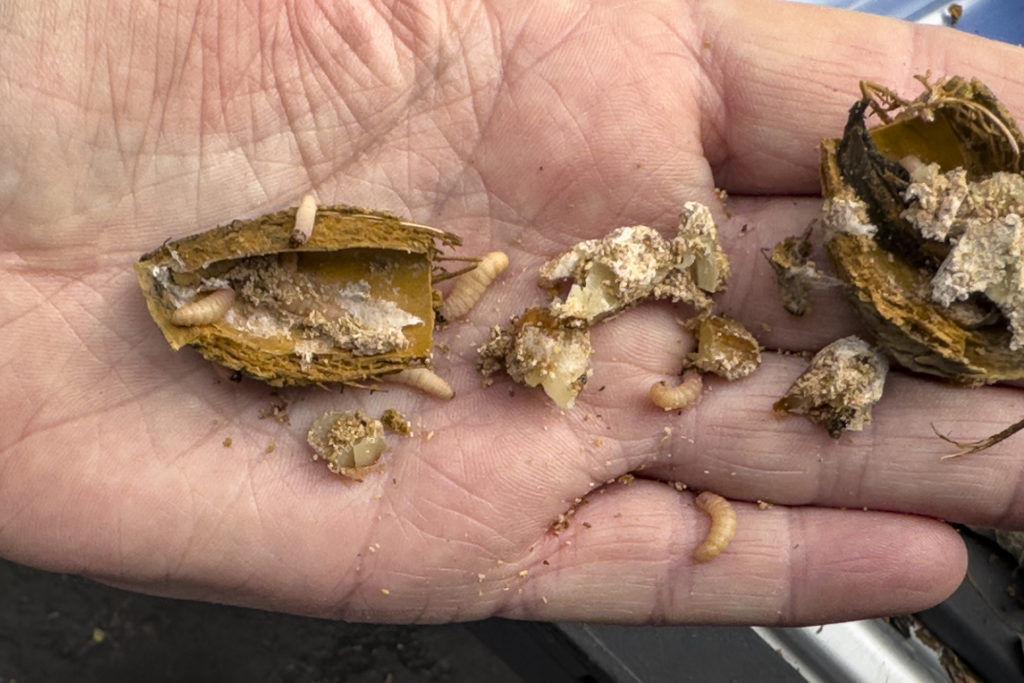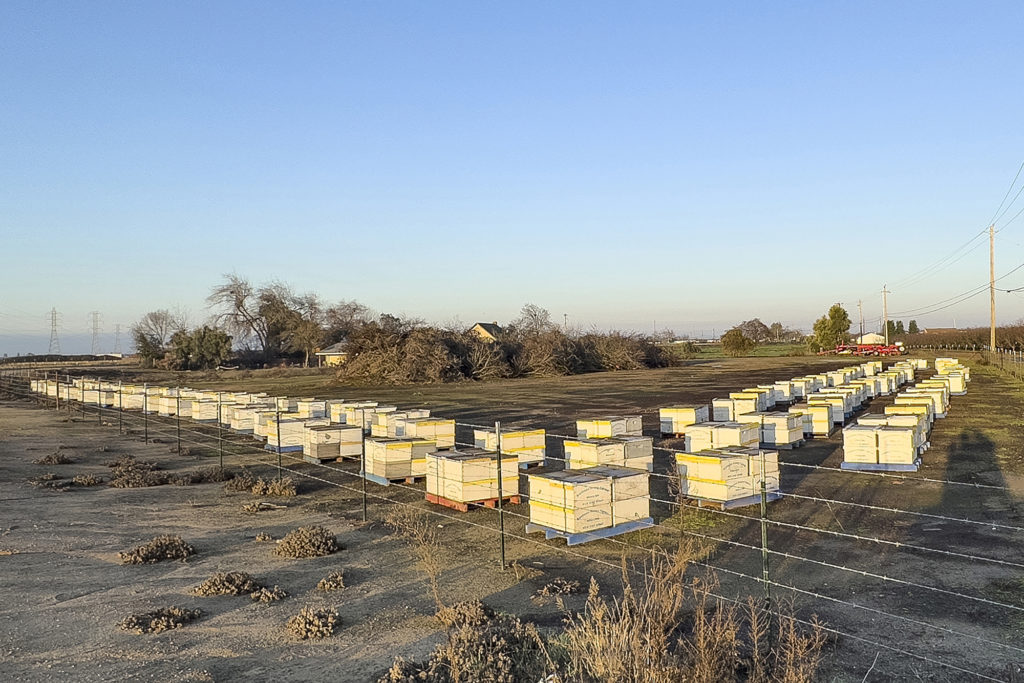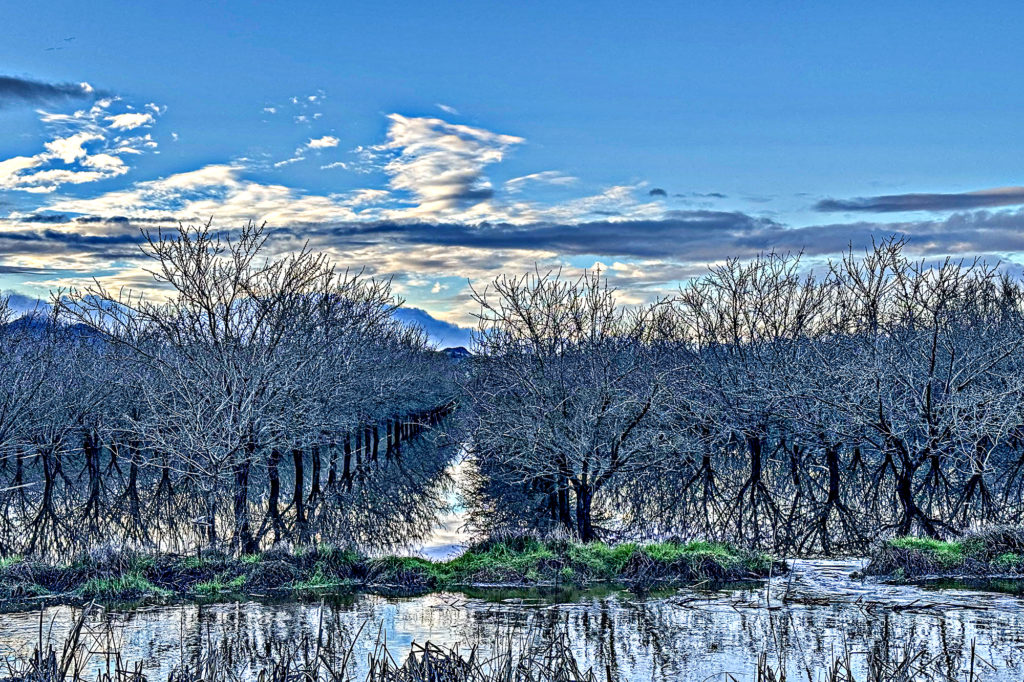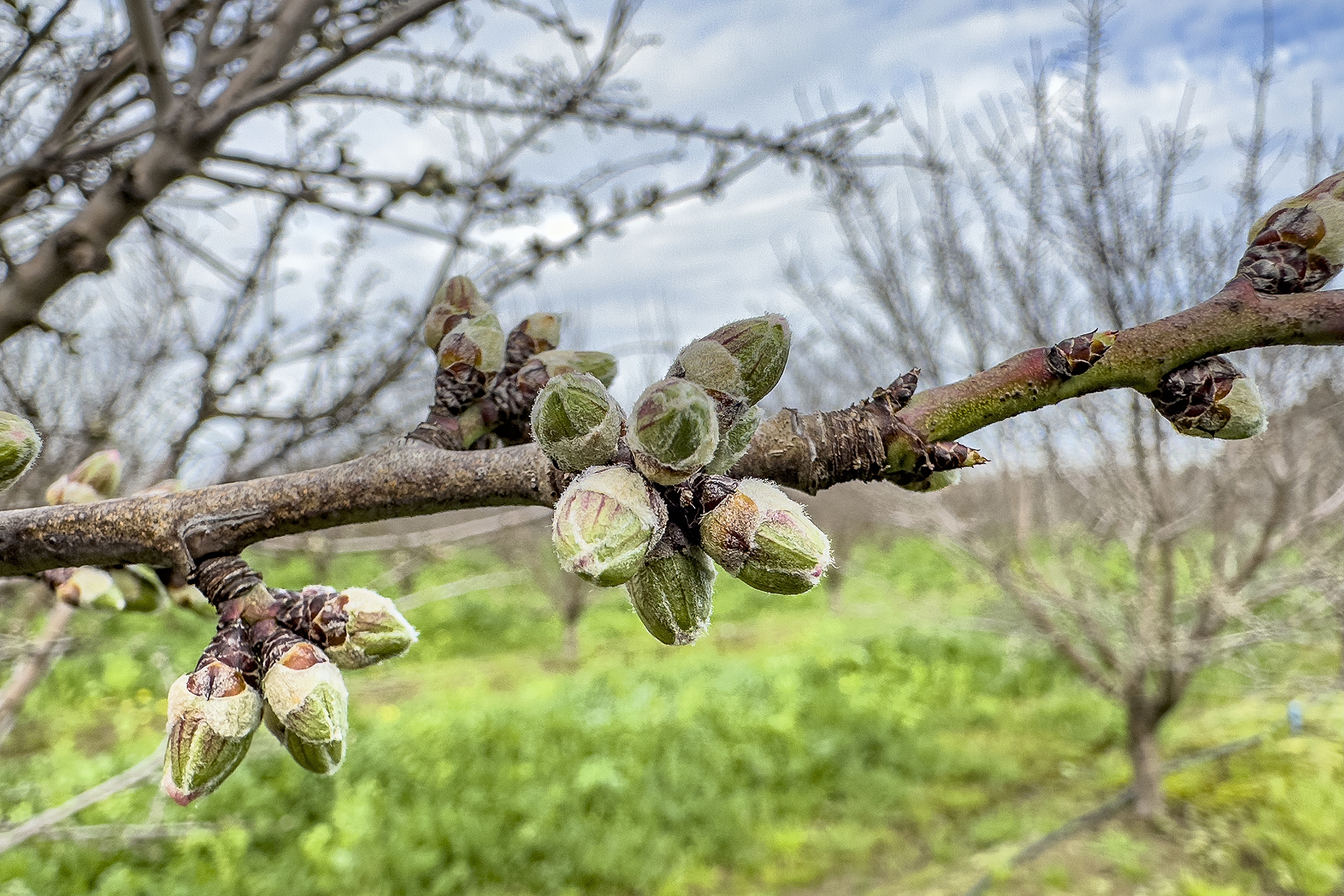
This report covers the conditions and activities observed prior to the start of the 2024 bloom. We anticipate starting regular weekly bloom reports during the week of February 11, 2024.
The highly touted La Nina weather phenomenon has delivered a fair amount of precipitation to California’s Central Valley over the past few weeks, with the strongest storm of the season battering the state as this report was being written. While the rainfall has helped to fill root zones and support cover crops, it has also posed considerable challenges for those working to complete dormant season tasks within the orchards. The warm nature of this winter’s storm systems has produced ample rainfall, but has also fallen short of seasonal norms for snow required in the Sierra Nevada watershed. As this report is being written, Sierra snowpack levels range from 67% of the seasonal average for the date in the northern mountains to 45% in the southern range. Fortunately, with few exceptions, California’s critical reservoirs are starting the year with above seasonal average storage levels, providing optimism that the valley will have adequate surface water for irrigation.
Following completion of the 2023 harvest, growers quickly turned to post-harvest and dormant season tasks. The prospect of continuing low market prices has forced growers to balance the potential return of each task against the cost required to complete the work. Consequently, tasks with lower potential return have been modified, delayed, or eliminated entirely.
Orchard sanitation, the removal of “mummy” nuts that failed to drop from the trees during the harvest has earned particular focus, given the excessively high reject levels, due to Navel Orange Worm (NOW) in the 2023 crop. Sanitation is the foundation of NOW management as the mummy nuts serve as overwintering sites for NOW larvae. Observers have noted very high infestation rates within the mummies, with multiple larvae present in each nut. The moths that emerge from the mummies in April then begin the infestation of the following year’s crop.
Orchard sanitation includes shaking mummy nuts from the trees, then sweeping them into the orchard “middles” and ultimate destruction using flail mowers. Growers normally wait until they have received some rainfall, as the moisture weakens the attachment of the nuts to the trees making removal easier (foggy days provide the best conditions for sanitation). However, last year’s reject levels inspired many growers to begin sanitation early, particularly those with orchards on heavy soils that may be inaccessible after heavy rain. In these instances, growers chose to take advantage of early morning dew shaking for a few hours each morning to remove as many mummies as possible, with plans to send shakers in again if conditions allowed. However, observers are reporting that as hard as growers have worked to sanitize their orchards, not all have been able to complete the work. The heavy rainfall has prevented access to orchards planted on heavy soils and the mummy load within these plantings remain unfavorably high. Best practices target leaving no more than one mummy per tree for optimal control, some say no more than one mummy per two trees. However, many plantings are carrying heavy mummy loads, posing challenges for the coming year. To make matters worse, all observers are reporting abandoned orchards that pose significant problems for neighboring growers. NOW moths are strong fliers and can fly for miles, increasing the potential for significant loses in nearby orchards.
Many growers have forgone pruning this year as part of the effort to cut costs. Training of young plantings is still a required practice. However, University of California research has shown that pruning of older plantings is not required and can be easily eliminated.
Weed control practices have also received a critical review. Growers must eliminate weed growth down the tree row, the “strip,” during the growing season in order to ensure a weed-free area for an efficient harvest. This process normally begins during the winter months with treatments to control weeds as they germinate. Many growers have modified their normal programs this year, opting to control weeds later in the season. This can be a critical decision as excessive weed growth can increase harvest costs and reduce the number of nuts recovered during the harvest.
Observers are reporting that cover crops, both planted and native, have benefitted from the recent rains. The flowers produced by the cover crops serve as a food source for honeybees prior to the start of the bloom, helping to ensure that hives are at their optimum strength as the bloom begins. Pollination represents a significant proportion of costs of production, and all want to provide the best opportunities for optimal pollination. Beekeepers have been moving bees into the Valley for since the first of the year, positioning the hives into “bee yards” near the orchards. The final movement of hives into the orchards is now underway. Some are facing challenges as orchards planted on heavier soils are difficult to access.
Observers are reporting that the bloom in early varieties is about to begin, with warm nature of the recent storm events accelerating the pace of bud development. Scattered open flowers have been reported in early blooming varieties along the edges of orchards near paved roads, particularly in older plantings. Flower petals of the early-blooming Winters and Sonora varieties are becoming visible as the buds move into the pink tip and popcorn stages. Nonpareil and Independence plantings are moving into green tip and should transition into pink tip during the week.
By Mel Machado, Vice President of Member Relations
Photos By: Austin Jackson, Nicole Jansen, Christine Ivory, KC Clendenin, Justin Elam and Mel Machado

